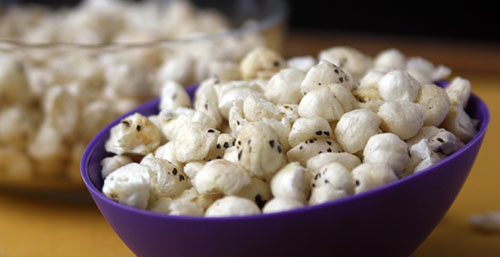
‘You need to work on strengthening the core’
‘Why not start with some core strengthening exercises’
How often have you heard this line from a fitness trainer/doctor/health coach??
Now, how many of you know exactly what the core is?? My guess would be ‘we have a general idea, though not sure’
So let me try and explain first, what ‘the core’ is…
I do not want to bore you with the scientific names of the muscles consisting of the core, which I’m sure nobody would understand and everybody would just scroll over.
So to make it simple, the core of the body is broadly considered to be the torso.
It is a complex series of muscles, extending far beyond your abs, including everything besides your arms and legs. The major muscles of the core reside in the area of the belly and the mid and lower back, and peripherally include the hips, the shoulders and the neck.

It is incorporated in almost every movement of the human body. Functional movements are highly dependent on this part of the body, and lack of core muscular development can result in a predisposition to injury.
The core forms a sturdy central link between your upper and lower body. Much like the trunk of a tree, core muscles need to be strong yet flexible. A weak or inflexible core drains power from many movements and can make it downright difficult to do some.
Functions:
- Contains and protects the internal organs –You will notice that this part of your body (core) doesn’t have many bones, except for the spine and some floating ribs, yet it contains many important internal organs that need to be kept safe and sound. Without the bony structure to rely on, the entire area needs to be wrapped up tightly to maintain the integrity of its contents. So I like to think of our core musculature as a tightly wrapped package protecting the internal organs.
- Ensures greater mobility of the spine and trunk –Because of the way our core musculature is organized, it allows a great range of movement in the trunk. It allows us to bend forward, backwards, sideways, twist and do combinations of those.
- Stabilizes the top part of the body over the bottom part- the core determines to a large part a person’s posture. In all, the human anatomy is built to take force upon the bones and direct autonomic force, through various joints, in the desired direction. The core muscles align the spine, ribs, and pelvis of a person to resist a specific force, whether static or dynamic.
- Controls the pelvic-lumbar relationship – The core is used to stabilize the thorax and the pelvis during dynamic movement and it also provides internal pressure to expel substances such as urine (continence),feces, air, vomit and also for labor and childbirth in women,
Core Stability:
In essence, core stability means ‘stability of the spine’, ‘core strength’ is the ability to support your spine and keep your body stable and balanced. It is the strength that allows you to perform manual tasks safely and effectively in everyday life.
There are “five different components of core stability: strength, endurance, flexibility, motor control, and function”. Without motor control and function, the other three components are useless, like a fish flopping out of water no matter how strong you are or how much endurance you have.
I like to believe that core strength is as vital as most of the major organs in the body, let me tell you why –
- Muscular tone helps blood circulate more effectively once it’s pumped from your heart. Core muscles are no exception, and when your core is strong you can notice an improvement in blood circulation.
- Core stability promotes healthierdigestion. The digestive system contains a lot of blood vessels and when the core area is stagnant, the whole digestive system may feel more sluggish too. You may see increased bloating, discomfort, and indigestion associated with meals. The digestive system also contains a large and essential part of the immune system. Core strength can help support your body’s immunity too as it rounds out healthy digestion and circulation.
- Because the diaphragm is located near the core, core strength promotes deeper and higher quality breathing.
- Because the pelvis is located near the core, women may find relief from cramps and PMS around the menstrual cycle after strengthening core muscles. Women use their core muscles during labor and delivery too, and having a strong core, help in an easier labor.
- Finally, the physical balance that comes from supporting your core can extend to yourmental-emotional health as well. Physical balance promotes a sense of calm, steadiness, and support.
How to Measure your core strength –
Let’s end with a fun activity!!
Let’s all of us measure our core strength, this way even people with regular exercise (including me) will know where we stand and how much further we need to work for a strong core..
Core Muscle Strength & Stability Test was designed by Brian Mackenzie, a senior athletics coach with UK Athletics, the United Kingdom’s National Governing body for Track and Field Athletics.
Preferably use a mat for performing this test, to get accurate results.
- Position a stop watch where you can easily see it
- Start in the Plank Exercise Position (elbows on the ground)
Hold for 60 seconds - Lift your right arm off the ground, Hold for 15 seconds
- Return your right arm to the ground and lift the left arm off the ground, Hold for 15 seconds
- Return your left arm to the ground and lift the right leg off the ground, Hold for 15 seconds
- Return your right leg to the ground and lift the left leg off the ground, Hold for 15 seconds
- Lift your left leg and right arm off the ground. Hold for 15 seconds
- Return you left leg and right arm to the ground
- Lift your right leg and left arm off the ground, Hold for 15 seconds
- Return to the Plank Exercise Position (elbows on the ground), Hold this position for 30 seconds
Results
- Good Core Strength
If you can complete the test fully, you have good core strength.
- Poor Core Strength
if you cannot complete the test fully, your core strength needs improvement.
Poor core strength results in unnecessary torso movement and swaying during all other athletic movements. People with poor core strength are more likely to suffer from back injuries, and the likelihood of other peripheral injuries also increases in those with a weak core
This results in wasted energy and poor biomechanics.
If you are unable to complete the test practice the routine three or four times each week until you improve.
By comparing your results over time, you will note improvements or declines in core strength.












